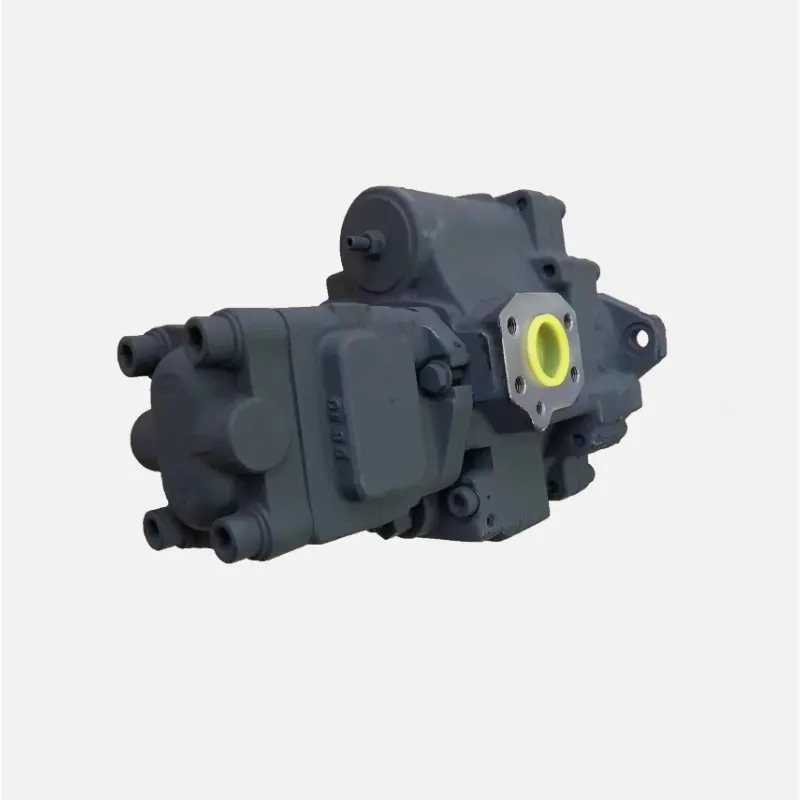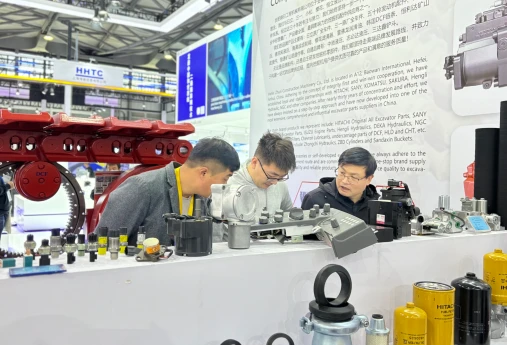دليل شامل لتركيب المضخة الهيدروليكية للحفارة
Release time: 2025-07-14
Is your excavator experiencing performance issues, reduced digging power, or unstable hydraulic functions? A worn-out or inefficient hydraulic pump may be the culprit. Upgrading or replacing the hydraulic pump is a key step in restoring your excavator’s optimal performance and maximizing operational efficiency. This guide will walk you through the essential considerations and steps for installing a new hydraulic pump on your excavator.

Why Upgrade or Replace Your Excavator’s Hydraulic Pump?
The excavator hydraulic pump is the heart of the excavator’s hydraulic system, responsible for generating high-pressure oil flow to power various functions, including the boom, arm, bucket, and tracks. Over time, due to harsh working conditions and wear and tear, the pump’s efficiency can decrease. Recognizing the signs of pump failure is crucial:
- Power and Speed Reduction: The movement of attachments becomes noticeably slower.
- Hydraulic Oil Overheating: Inefficient pumps generate excessive heat.
- Unusual Noise: The pump emits whining, grinding, or hissing sounds.
- Intermittent Operation: Hydraulic functions work intermittently or inconsistently.
- Leaks: Visible oil leakage around the pump housing or connections.
Replacing a faulty pump with a new, high-quality one can significantly improve excavator performance, reduce downtime, and potentially lower fuel consumption.
Key Considerations Before Installation
Before beginning the installation process, careful planning is essential:
- Confirm the Correct Pump Model: Ensure that the new hydraulic pump is compatible with your excavator’s brand, model, and hydraulic system specifications. Consult the excavator’s service manual or hydraulic experts to obtain the correct part number and specifications (e.g., flow rate, rated pressure, installation configuration).
- Gather Required Tools and Equipment: You may need a set of wrenches, socket sets, hydraulic hose wrenches, torque wrenches, an oil pan, new hydraulic oil, and proper safety gear (gloves, safety glasses).
- Ensure a Clean Working Environment: Dirt and debris are enemies of hydraulic systems. Clean the area around the pump and the new pump thoroughly before installation.
- Consult the Service Manual: Always refer to the excavator’s service manual for specific installation instructions and safety precautions.
Step-by-Step Installation Guide (Overview)
Warning: Hydraulic systems operate under high pressure. Improper handling can lead to severe injury. If you are not familiar with hydraulic systems, it is highly recommended to seek help from a qualified hydraulic technician.
- Release Hydraulic System Pressure: This is a critical safety step. Follow the instructions in the service manual to safely release hydraulic system pressure.
- Drain Hydraulic Oil: Place an oil pan beneath the pump and carefully disconnect the hydraulic hoses. Allow the hydraulic oil to drain completely. Dispose of used hydraulic oil according to local regulations.
- Disconnect Existing Hoses and Fittings: Carefully disconnect all hydraulic hoses and fittings connected to the old pump. Cover the open hose and ports of the old pump to prevent contamination.
- Remove the Old Pump: Unbolt the old hydraulic pump from its mounting bracket. Be mindful of its weight during removal.
- Install the New Pump: Carefully position the new hydraulic pump onto the mounting bracket and secure it with the appropriate bolts. Tighten the bolts to the torque specifications provided in the service manual.
- Reconnect Hydraulic Hoses and Fittings: Reconnect the hydraulic hoses and fittings to the new pump, ensuring they are tightened properly to prevent leaks. If necessary, use new O-rings or seals.
- Refill Hydraulic System: Add the recommended type and viscosity of hydraulic oil according to the manufacturer’s guidelines.
- Bleed the Hydraulic System: Air trapped in the hydraulic system can cause operational issues. Follow the service manual’s steps to bleed the system and remove any residual air.
- Test the System: Start the excavator and test all hydraulic functions carefully. Check for leaks and ensure smooth operation with responsive movements.
Conclusion
Upgrading or replacing the genuine excavator hydraulic pump can significantly improve the performance of your excavator and extend its lifespan. By carefully planning, using the right parts, and following the correct procedures (or seeking professional help), you can ensure a successful installation and restore the machine to optimal working condition. Investing in high-quality hydraulic pumps and proper installation will ultimately increase productivity and reduce downtime on your excavation projects.
If you need professional hydraulic pump installation services or expert advice, feel free to contact ZhuRi! We are here to help you enhance your equipment’s performance and ensure the smooth operation of your projects.


